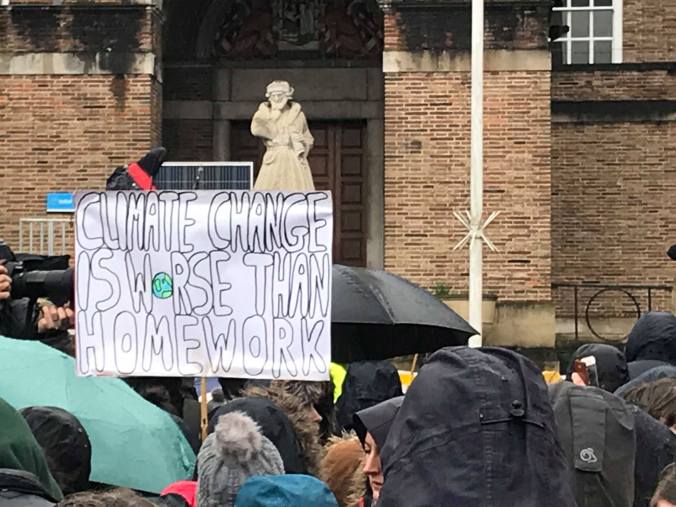It’s thought by many that a high street full of charity shops is a high street that is dying. Yet, with plastic pollution damaging wildlife at an all time high, and the fashion industry being responsible for 10% of all of humanity’s carbon emmisions, they’ve never been more needed.
For me, there’s no thrill like charity shopping. Sifting through scarfs, hats and bandanas in an effort to find that golden (bargain) piece. Or scanning every rail to discover something that you’d never imagine leaving with. The unpredictability that you get in charity shops can’t be replicated in your bog-standard store.
A couple of months ago my Nan admitted that she’d be embarrassed if she were to shop in charity shops when she was my age (ironically, she now works in one.) This generational shift in attitude, like many others, was much needed.
Undoubtedly, my favourite place to clothes shop is in charity shops. Purchasing clothes from them is some sort of weird achievement for me – great for my purse, the environment and of course for good causes.
Here’s a few of my favourite charity shop finds:
High street stores move constantly with trends, every bit of clothing replaced swiftly and ruthlessly. That could explain why last summer, it was estimated that Brits spent £2.7b on outfits they’ll on wear once.
This figure is frankly shocking when we live on a planet that’s now suffering desperately from the goods we relentlessly purchase, throw away and replace. Perhaps it should be our philanthropic duty to shop more in second-hand shops, and make more of an effort to reuse what we already have.

Charity shops aren’t typically known for housing the most fashionable or best quality pieces, often the opposite, but it’s an archaic stereotype that I think I’ve proven wrong in my previous pictures.
I’m also a true believer in it’s not always what you wear, but how you wear it: Fashion is completely what you make it. And with the boom of upcycling, dressing well on a budget is easy.

The average transaction value in a charity shop is just £4.05 and collectively, they raise more than £295m for good causes every year in the UK: it’s a complete win-win. And as every visit to a charity shop is a fashion history lesson in itself, the trip is always worthwhile.
I like to buy marmite items from charity shops – mainly because they can make interesting talking points. My mum and I have a joke that the more she hates an item of clothing I’ve bought, the more I like it. But regardless of what people think, if you can wear it with confidence, then you can pull it off.

Vintage shops and kilo sales are also ingenious ways to reduce clothing landfill. They can be messy, stressful and sweaty but they’re often full of hidden gems. I also haggle from time-to-time in vintage stores (students have got to do what they’ve got to do!)
In 2018/19 339,000 tonnes of textiles alone were kept out of landfill as a result of charity retail in the UK. This is just one of the reasons why we need more charity shops on our high streets, not less. We should all be giving to them, using them and loving them a bit more.





 By Wikimedia Commons
By Wikimedia Commons


